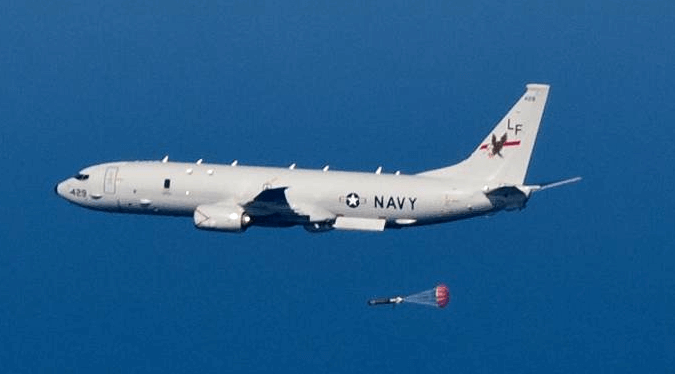Amid heightening tensions between India and China in Ladakh and continues US-China hostilities over Taiwan and the South China Sea, both India and the US displayed solidarity in the Indian Ocean after an American P-8 Poseidon aircraft recently landed at Andaman and Nicobar Islands for refuelling.
How India Could Be Operating Its Rafales, Sukhois From Strategic US Military Base Of Diego Garcia?
This was the first time when an American maritime patrol aircraft refuelled at India’s Andaman and Nicobar islands on September 25. The “fully armed” P-8 Poseidon aircraft landed in Port Blair for refuelling and logistical support.
Reportedly, India and the US have inked a military agreement in 2016 and have, in the past, provided logistical support to their naval vessels but this was the first for an aircraft.
The Logistics Exchange Memorandum of Agreement (LEMOA) signed in 2016, between Washington and New Delhi, gives reciprocal access to each other’s naval bases for refuelling and logistical support.
It also includes port calls, joint exercises, training and Humanitarian Assistance and Disaster Relief. Therefore, India gets similar access to US bases in Djibouti, Diego Garcia, Guam and Subic Bay.

India and the US have been facing a common foe, China, who has been flexing its muscles, raising tensions with both the countries. India and China are engaged in a stalemate at the Eastern Ladakh border since May while the US and China have been at loggerheads in the South China Sea.
The Indian Navy already possesses eight P-8I (I stands for India) aircraft. With Chinese threat on the border, New Delhi has placed an order of more aircraft in July.
The P-8I Poseidon is integrated with the Harpoon Block II air-launched missiles and lightweight torpedoes, the reconnaissance craft – it can carry 129 sonobuoys to locate subs – turns into a deadly submarine killer that can also launch anti-ship missiles.
Developed by Boeing, the P-8I is designed for long-range anti-submarine warfare, anti-surface warfare, and intelligence, surveillance and reconnaissance missions. It has a range of about 2,200 km and flies at a maximum speed of 490 knots, or 789 km per hour.
With increased Chinese muscle-flexing in the sea, the Indian Navy is on high alert. Reportedly, India is also working to fasten plans for deploying additional defence personnel in Andaman & Nicobar Islands and boosting infrastructure to counter China’s growing presence in the Indian Ocean Region while getting prepared for any possible clash.
After Hypersonic Missile, Indian DRDO Tests Another ‘SMART’ Weapon
In July, India and the US conducted a joint exercise near the Andaman & Nicobar Islands. World’s largest warship, USS Nimitz was returning from the South China Sea through the Malacca Straits conducting operations with the USS Ronald Reagan, nuclear-powered supercarrier.
“The purpose is to show an unambiguous signal to our partners and allies that we are committed to regional security and stability,” said Rear Adm. George M. Wikoff, commander of the strike group led by the USS Ronald Reagan, in an interview.
The strengthened relations between New Delhi and Washington can prove to be beneficial for both the nations amid increasing Chinese aggression.
“The US and India are becoming increasingly close as they are both blaming China to shirk their own domestic responsibilities. The US keeps drawing India into its Indo-Pacific Strategy, trying to form a joint force to pressure China,” wrote Ling Shengli, secretary-general of the International Security Study Center at China Foreign Affairs University, in the Chinese state-run Global Times.